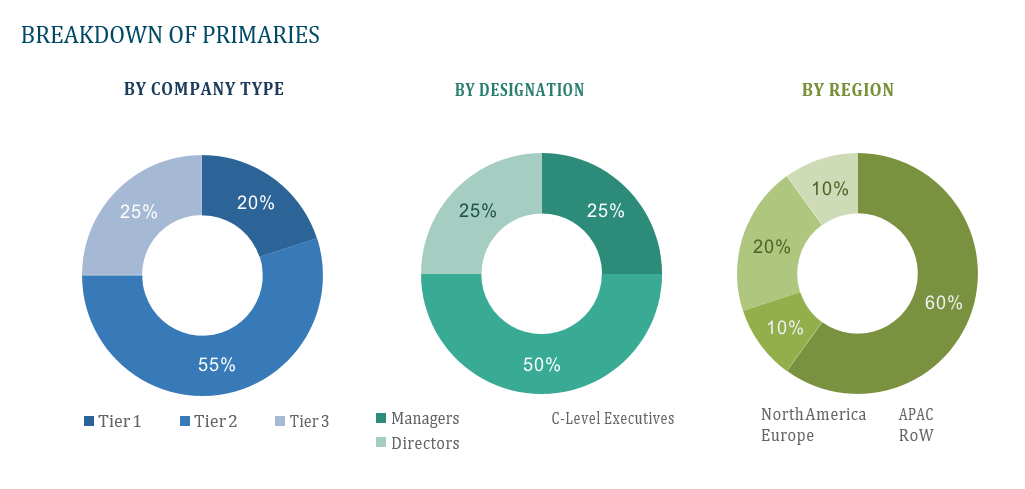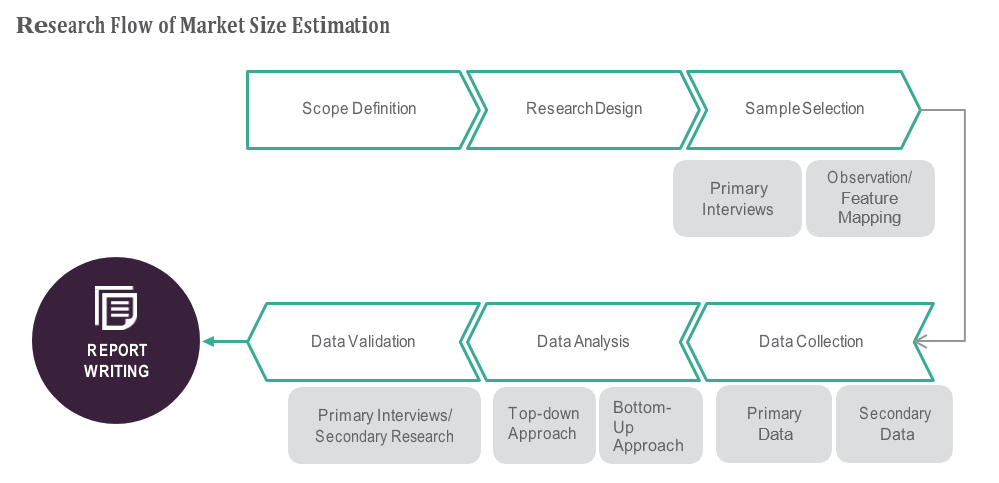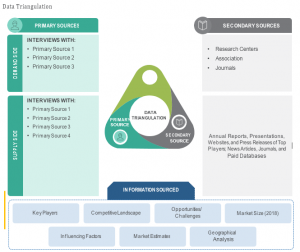OVERVIEW
The Automated Material Handling Equipment Market is projected to experience substantial growth with its market valuation anticipated to increase from USD 40.2 billion in 2024 to an estimated USD 73.4 billion by 2029, reflecting a compound annual growth rate (CAGR) of 12.8% during the forecast period. Automated material handling equipment encompasses a wide range of systems and machinery used to automate the movement, storage, control, and protection of materials and products throughout the manufacturing, warehousing, distribution, consumption, and disposal processes. These systems include automated guided vehicles (AGVs), conveyor systems, robotic systems, automated storage and retrieval systems (AS/RS), and automated sortation systems.
The market’s expansion is driven by the increasing demand for automation in material handling processes, advancements in robotics and automation technologies, and the growing emphasis on enhancing operational efficiency and productivity. The rising adoption of automated material handling equipment in industries such as automotive, food and beverages, e-commerce, and pharmaceuticals further bolsters market growth. However, challenges such as high implementation costs, technical complexities, and the need for continuous innovation to meet evolving industry standards must be addressed to sustain market momentum.
Geographically, the North America region dominates the automated material handling equipment market due to its advanced technological infrastructure, significant investments in automation technologies, and a growing emphasis on operational efficiency. Europe and Asia Pacific also hold substantial market shares driven by technological advancements and strong demand for high-performance automated solutions. However, the market faces challenges such as regulatory compliance, high production costs, and the need for ongoing innovation to enhance performance and reduce costs.
Market Dynamics
Drivers:
The growth of the automated material handling equipment market is primarily driven by the increasing demand for automation in material handling processes. As industries seek to enhance operational efficiency, reduce labor costs, and improve productivity, there is a growing need for automated solutions that can streamline material handling operations. Automated material handling equipment provides the necessary tools to automate the movement, storage, control, and protection of materials and products, ensuring faster and more accurate operations. In the automotive industry, automated systems are used to transport and assemble parts, reducing manual labor and increasing production speed. In the food and beverage industry, automated systems ensure efficient handling and processing of products, maintaining hygiene standards and reducing waste. This growing demand for automation in material handling processes is a key driver of the automated material handling equipment market.
Advancements in robotics and automation technologies are also significant drivers of market growth. Innovations in robotics, artificial intelligence (AI), and machine learning are enhancing the performance, flexibility, and reliability of automated material handling systems. Advanced robotic systems, such as collaborative robots (cobots) and autonomous mobile robots (AMRs), provide higher precision and versatility, enabling seamless integration with existing workflows. The development of AI and machine learning algorithms enhances the decision-making capabilities of automated systems, enabling real-time monitoring, predictive maintenance, and adaptive operations. These technological advancements are driving the demand for high-performance automated material handling solutions in various applications.
The growing emphasis on enhancing operational efficiency and productivity is another key driver for the market. With increasing competition and the need to meet customer demands, there is a strong focus on developing solutions that can optimize material handling operations and improve overall efficiency. Automated material handling equipment plays a crucial role in this process by providing faster, more accurate, and reliable operations, reducing downtime and increasing throughput. In the e-commerce industry, automated systems are used to sort and transport packages, ensuring timely and accurate deliveries. In the pharmaceutical industry, automated systems handle and store sensitive materials, maintaining safety and quality standards. This growing focus on enhancing operational efficiency and productivity is further propelling the demand for automated material handling equipment.
Key Opportunities :
The automated material handling equipment market presents numerous opportunities for growth and innovation, particularly in the development of advanced robotic systems and integrated automation solutions. The increasing focus on automation and the need to create efficient and scalable material handling systems are driving research and development efforts towards innovative automated solutions. The development and commercialization of high-performance robotic systems, advanced AI and machine learning algorithms, and integrated automation platforms present significant growth opportunities. These advanced technologies offer improved performance, real-time capabilities, and enhanced user experiences, making them attractive options for various material handling applications.
The expansion of the automated material handling equipment market into emerging economies offers significant growth potential. Rapid industrialization, urbanization, and increasing investments in manufacturing and logistics infrastructure in countries such as China, India, Brazil, and South Africa are driving the demand for advanced automated material handling solutions in various sectors. The rising consumer awareness of automation and the preference for efficient and reliable material handling systems in these regions are also contributing to the growth of the market. Manufacturers have the opportunity to tap into these growing markets by offering cost-effective, high-performance automated material handling solutions that meet the specific needs and regulatory requirements of emerging economies.
The increasing focus on digitalization and advanced manufacturing techniques offers promising prospects for the automated material handling equipment market. The adoption of advanced manufacturing technologies such as precision engineering, real-time monitoring, and automation is driving the demand for automated material handling systems with precise application properties and enhanced performance characteristics. The development of smart automated systems with sensors and connectivity features is also enabling real-time monitoring and optimization of material handling processes. The integration of digital technologies in automated material handling equipment manufacturing and application processes is expected to enhance production efficiency, reduce waste, and improve product quality, further driving market growth.
Restraints :
High implementation costs are a significant restraint for the market. The transition to automated material handling systems involves significant capital investment in robotic systems, AI and machine learning technologies, and integrated automation platforms. The high initial investment required for developing and implementing automated material handling solutions can be a barrier for small and medium-sized enterprises (SMEs) and new market entrants. Additionally, the cost of high-performance components, such as sensors and advanced algorithms, contributes to the overall production cost. Manufacturers must develop cost-effective solutions and provide flexible financing options to make advanced automated material handling technologies more accessible to a wider range of customers.
Technical complexities related to the operation and maintenance of automated material handling systems also present challenges for the market. The operation of advanced automated systems requires specialized knowledge and expertise in robotics, AI, and automation technologies. The complexity of operating and maintaining these systems can lead to longer learning curves, increased operational costs, and potential compatibility issues with existing material handling infrastructure. Manufacturers must invest in research and development to address these technical complexities and enhance the ease of operating and maintaining automated material handling systems in various applications.
Environmental concerns related to the production and disposal of automated material handling equipment also present challenges for the market. The production of electronic components and robotic systems involves processes that can generate waste and emissions, posing environmental and health risks. Additionally, the disposal of automated material handling equipment at the end of their life cycle poses challenges related to waste management and recycling. The increasing regulatory scrutiny on the environmental impact of manufacturing activities and the growing demand for sustainable products necessitate the development of more eco-friendly production practices. Manufacturers must invest in research and development to create advanced formulations and production methods that meet regulatory standards and address environmental concerns.
Regional Information:
• North America
North America remains a significant market for automated material handling equipment, characterized by advanced technological innovation, a mature industrial infrastructure, and strong consumer demand for efficient automation solutions. The region’s robust regulatory framework and increasing investments in automation technologies drive market growth. However, competition from traditional material handling methods and the need for skilled labor pose challenges, requiring continuous innovation and cost-reduction strategies.
• Europe
Europe leads in the adoption of sustainable and environmentally friendly automation practices, driven by stringent environmental regulations, strong governmental support, and high consumer awareness. The region’s commitment to reducing carbon emissions and enhancing industrial efficiency fuels the demand for advanced automated material handling solutions. However, economic uncertainties and the need for technological advancements necessitate strategic planning and risk management to navigate the market landscape effectively.
• Asia Pacific
The Asia Pacific region is expected to witness the highest growth rate in the automated material handling equipment market due to its large population, rapid industrialization, and significant investments in manufacturing and logistics infrastructure. Countries like China, India, and Japan are investing heavily in advanced automation technologies and sustainable solutions, driving the demand for high-performance automated material handling systems. However, challenges related to regulatory compliance, high production costs, and the need for skilled labor necessitate localized strategies and market insights for successful market penetration.
Recent Developments:
In March 2024, SSI SCHAEFER introduced a new software solution designed specifically for the independent operation of the SSI LOGIMAT Vertical Lift Module. Known as LOGIONE, this software offers a straightforward and user-friendly storage location and article management system. With intuitive user interfaces, operators are supported seamlessly, eliminating the necessity for extensive training.
Key market Players:
Daifuku Co., Ltd., KION Group AG, Toyota Industries Corporation, Honeywell International Inc., and Murata
Frequently Asked Questions
1) What is the projected market value of the Automated Material Handling Equipment Market?
– The Automated Material Handling Equipment Market is expected to reach an estimated value of USD 73.4 billion in revenue by 2029.
2) What is the estimated CAGR of the Automated Material Handling Equipment Market over the 2024 to 2029 forecast period?
– The CAGR is estimated to be 12.8% for the Automated Material Handling Equipment Market over the 2024 to 2029.
3) Who are the key players in the Automated Material Handling Equipment Market?
– Daifuku Co., Ltd., KION Group AG, Toyota Industries Corporation, Honeywell International Inc., and Murata
4) What are the drivers for the Automated Material Handling Equipment Market?
– The primary drivers for the Automated Material Handling Equipment Market include the increasing demand for automation in material handling processes, advancements in robotics and automation technologies, and the growing emphasis on enhancing operational efficiency and productivity. Automated material handling equipment provides the necessary tools to automate the movement, storage, control, and protection of materials and products, ensuring faster and more accurate operations. The adoption of high-performance automated material handling systems in sectors such as automotive, food and beverages, e-commerce, and pharmaceuticals further drives market growth.
5) What are the restraints and challenges in the Automated Material Handling Equipment Market?
– The Automated Material Handling Equipment Market faces several challenges, including high implementation costs, technical complexities, and environmental issues. The transition to automated material handling systems involves significant capital investment in robotic systems, AI and machine learning technologies, and integrated automation platforms, which can be a barrier for small and medium-sized enterprises (SMEs). Technical complexities related to the operation and maintenance of automated systems raise concerns about operational efficiency and compatibility. Environmental concerns related to the production and disposal of automated material handling equipment also necessitate the development of eco-friendly practices. Overcoming these challenges through continuous innovation and investment in sustainable solutions is crucial for the market’s growth.
6) What are the key applications and offerings of the Automated Material Handling Equipment Market?
– Automated material handling equipment encompasses a wide range of systems and machinery used to automate the movement, storage, control, and protection of materials and products throughout the manufacturing, warehousing, distribution, consumption, and disposal processes. Key applications include automotive, food and beverages, e-commerce, and pharmaceuticals, where automated material handling systems offer improved operational efficiency, accuracy, and productivity. The development of advanced robotic systems, high-performance AI and machine learning algorithms, and integrated automation platforms further enhances the performance, flexibility, and reliability of these products. The adoption of smart automated material handling systems with real-time monitoring and optimization capabilities is also driving advancements in material handling technology.
7) Which region is expected to drive the market for the forecast period?
– Asia pacific is expected to have the highest market growth from 2024 to 2029
Why Choose Us?
Insights into Market Trends: Global Market Studies reports provide valuable insights into market trends, including market size, segmentation, growth drivers, and market dynamics. This information helps clients make strategic decisions, such as product development, market positioning, and marketing strategies.
Competitor Analysis: Our reports provide detailed information about competitors, including their market share, product offerings, pricing, and competitive strategies. This data can be used to inform competitive strategies and to identify opportunities for growth and expansion.
Industry Forecasts: Our reports provide industry forecasts, which will inform your business strategies, such as investment decisions, production planning, and workforce planning. These forecasts can help you to prepare for future trends and to take advantage of growth opportunities.
Access to Industry Experts: Our solutions include contributions from industry experts, including analysts, consultants, and subject matter experts. This access to expert insights can be valuable for you to understand the market.
Time and Cost Savings: Our team at Global Market Studies can save you time and reduce the cost of conducting market research by providing comprehensive and up-to-date information in a single report, avoiding the need for additional market research efforts.









